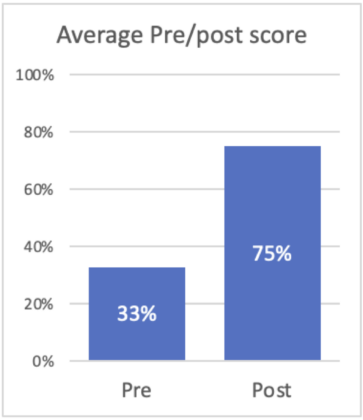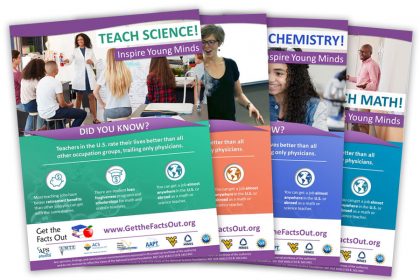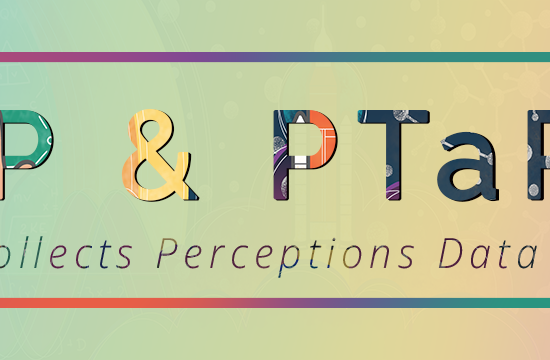How to use GFO presentations effectively to “bust myths” about the teaching profession for students and faculty

I’m Dr. Stephanie Chasteen, the external evaluator for Get the Facts Out. It’s my job to see how well the project achieves its goals.
In today’s blog, I’ll write about some data we’ve gathered on the workshops and presentations from Get the Facts Out:
-
-
-
- Who are they reaching?
- What is their impact?
- What are the takeaways for people using Get the Facts Out materials to give these presentations?
-
-
Get the Facts Out has a variety of student and faculty presentations that persuasively convey the facts about teaching as a profession.
Get the Facts out has a variety of student and faculty presentations that persuasively convey the facts about teaching as a profession. These are freely available on GFO’s Recruiting Resources page.
The student presentation (“Busting Myths about the Teaching Profession”) is 15-30 minutes long, and the faculty workshop (“Teaching, The Best-Kept Secret!”) is 15-50 minutes long.
It’s important to use the full presentation to achieve the full impact of these tested resources. You can find these slides here:
For students: Busting Myths about the Teaching profession
For faculty: Teaching, The Best-Kept Secret
Get the Facts Out presentations have reached at least 2,700 students in the last year alone.
In 2020-21, I counted a total of 80 student presentations delivered by GFO change agents, project staff, and faculty champions, reaching at least 2,700 students. If you are giving workshops, be sure to register as a champion and log your activities; it really helps the project (including me!) keep track of and report what is happening.
Get the Facts Out has reached at least 2,500 faculty in the past year.
The project has also been busy conducting faculty workshops; 105 faculty workshops were registered this past year (mostly by project staff or change agents), reaching at least 2,500 faculty. Don’t worry if you’ve just been using the student presentations—that’s pretty typical for GFO champions. But GFO champions did reach about 500 of those 2,500 faculty! So don’t forget that you can spread the word to your fellow faculty, including advisors and colleagues in Education. Or, give a faculty presentation at another institution in your region; at least one institution jump-started their GFO engagement in this way.

Students’ perceptions of the teaching profession improved dramatically after a GFO presentation. (N=2,741)
Student presentations and faculty workshops are highly effective.
When you download and open the presentation, you will see a link to a pre/post survey of facts about and perceptions of teaching as a profession. These surveys are great for you and your participants to get insight into their perceptions. After they finish the post-quiz, participants will see their quiz “score,” along with the correct answer for any items they missed.
I also analyze all this data and send it to you, with a report showing the strengths and weaknesses of the presentation based on how the quiz scores changed from pre to post. When I analyzed the data across all the workshops in the past year (N=35 with full data), I found that participants in student presentations had a 42% gain on average, with a 2.0 effect size, and those in faculty workshops had a 43% gain with a 2.1 effect size.
These are very large gains and effect sizes, and a variety of presenters were able to achieve these high gains. After the presentation, many students agree that teaching is a good career, and disagree that teaching pays a lot less than careers you can get with the same degree.
I found that participants in student presentations had a 42% gain on average, with a 2.0 effect size, and those in faculty workshops had a 43% gain with a 2.1 effect size.
Some faculty do not use the full presentation when using Get the Facts Out.
In speaking to faculty in interviews, I discovered that some “pick and choose” slides to use as part of a presentation about their program.
GFO has concerns about this approach since only the complete presentations have been tested and found to be effective opportunities for learning and persuasion. The GFO research has found that faculty are less likely to believe the facts about teaching if they haven’t had a chance to dive into the data and discuss it with one another.
Also, students are more likely to explore teaching as a profession if they have the opportunity to discuss ideas about teaching with peers and mentors after the presentation.
The full presentations support these critical conversations, and thus we encourage everyone to try to take advantage of the full, tested presentation materials. You can still add your own slides to the beginning or end (or even the middle, but make sure it doesn’t interrupt the flow)




